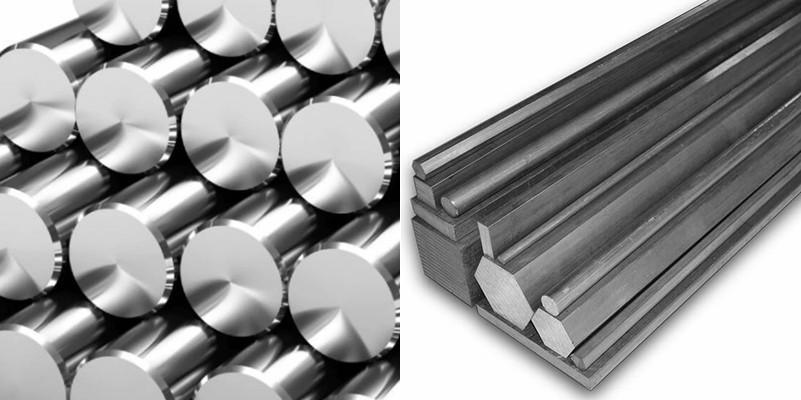- April 28, 2023
Steel is among the most common industrial materials in the world. It’s produced by combining iron with different elements through chemical and physical reactions through specific applications. Because of so many different combinations available in the industry, choosing the right kind of steel materials becomes a challenge.
Alloy steel and carbon steel are two common steel variants and are used across different industries because of their distinct properties. Understanding those differences is important as it allows manufacturers to properly utilize the types of steel to get the most out of the material being used.
Overview of Carbon Steel and Its Types
Carbon steel, as its name suggests, is a steel variant that primarily uses different concentrations of carbon mixed with Iron to create a strong, robust, and versatile alloy. Generally, some variants also have trace amounts of elements like Manganese and Silicon, but carbon remains the most predominant in the mixture.
Things that make carbon steel great are its relative simplicity, versatility, and lower production costs. It doesn’t require any elaborate production process and can be quickly produced. However, that simplicity results in relatively lower strength, hardness, and corrosion resistance.
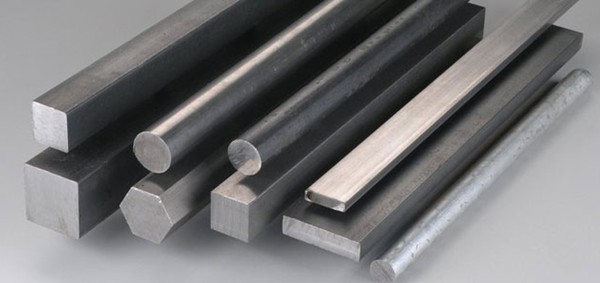
Carbon Steel Types
The type of carbon steel depends on the concentration of carbon in the mixture. Generally, there are 4 categories based on the amount of carbon content.
Low-Carbon Steel
Contains about 0.3% carbon, and is also referred to as mild steel. It is characteristically ductile and is an excellent material for applications requiring a lot of flexibility and intricate profiles. Steel wires and fences are prime examples of mild steel materials.
Medium-Carbon Steel
Carbon content between 0.3% and 0.6% in the mixture. It is more durable than low-carbon steel and is often used in applications that require a balance of strength and ductility. Common applications include the manufacturing of axles, gears, and shafts.
High-Carbon Steel
Carbon Content is around 0.6% to 1.4%, making it much harder and stronger than low and medium-carbon steel. High-carbon steel is often used in applications that require high strength. For instance, cutting tools, knives, and springs are made from high-carbon steel.
Very High Carbon Steel
Contains between 1.4% and 2.0% carbon, and is also known as cast iron. It is very hard and brittle and is commonly used in applications that require extreme hardness and wear resistance.
Overview of Alloy Steel and Its Types
Alloy Steel is a combination of Iron, Carbon, and various other elements like Nickel, Chromium, and Molybdenum. The additional elements make alloy steel unique and enhance the already excellent physical properties like strength, toughness, and corrosion resistance to a new extreme.
All of the aforementioned qualities, however, come at a cost. The process of creating alloy steel is more elaborate and resource intensive than that of carbon steel. This means that alloy steel is more expensive and requires more time to create.
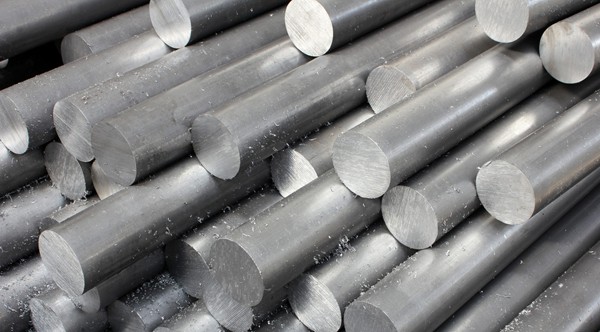
Alloy Steel Types
There is no one way to ascertain the types of alloy steel as the combinations and possibilities are limitless. However, the following 5 types are the most common:
1. Chromium Steel: As the name suggests, it contains chromium as the primary alloying element, which improves corrosion resistance, wear resistance, and high-temperature strength. It is quite expensive and is common in intensive applications like aerospace components and drilling equipment.
2. Nickel Steel: Nickel acts as the primary alloying element, which improves toughness, ductility, and corrosion resistance. It is commonly used in applications such as gas turbine blades, aircraft engine components, and chemical processing equipment.
3. Molybdenum Steel: This type of steel contains molybdenum as the primary alloying element, which improves high-temperature strength and wear resistance.
4. Vanadium Steel: Contains vanadium and delivers improved strength, toughness, and fatigue resistance. It is commonly used in applications such as axles, crankshafts, and gears.
5. Tool Steel: Contains a variety of alloying elements, such as chromium, molybdenum, and tungsten, which improve hardness, wear resistance, and toughness. Tool steel is usually used in cutters, jigs and fixtures, and tooling mold.
Alloy vs Carbon Steel: What’s the Difference?
Technically, or by definition, carbon steel itself is an alloy as well. However, it’s not considered as such because of the drastic alloy vs carbon steel differences. Carbon steel is not weak per se, alloy steel completely takes the inherent strength to the next level for high-intensity applications.
There are many other key differences and knowing them in detail is integral for any manufacturer so that they can make a smart choice during the material selection process.
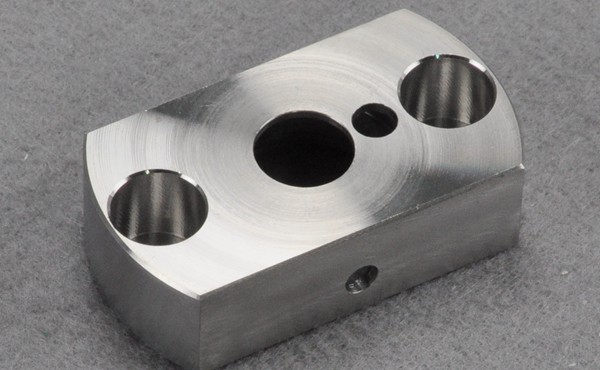
Alloy vs Carbon Steel: Strength
Alloy steel is a lot stronger than its carbon counterpart, thanks to the addition of multiple alloying elements like chromium and nickel. Similarly, alloy steel has a higher yield and tensile strength, which makes it suitable for a lot of intensive applications with high strength requirements.
Alloy vs Carbon Steel: Hardness
Elements like Tungsten and Vanadium are known for their hardness without any additional process like heat treatment. The addition of these elements in steel alloy can also enhance the overall hardness and resistance to abrasion/indentations.
Carbon steel, on the other hand, also offers great hardness properties after extensive processes like heat treatment and tempering. However, it still doesn’t come close to the hardness level of Alloy steel.
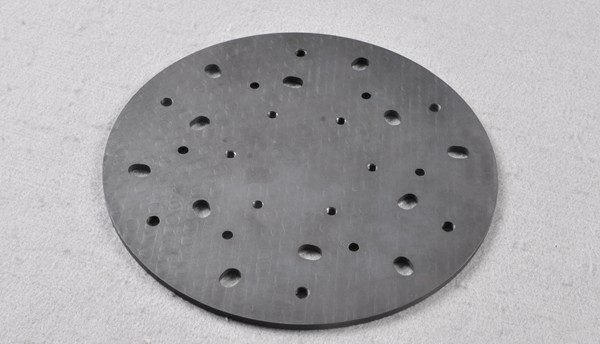
Alloy vs Carbon Steel: Durability
Generally, steel of any kind is pretty durable and that’s why it’s so commonly used across various industries. However, alloy steel possesses higher strength, hardness, and overall corrosion resistance than its carbon counterpart. Carbon steel can quickly corrode in many harsher environments and may even require multiple treatments to enhance its longevity and performance.
Alloy vs Carbon Steel: Versatility
Carbon steel has a limited number of variants as there is a limit to how much carbon can be added to the mixture. Alloy steel, however, is different. There are limitless combinations to obtain specific values depending on the application requirements. From enhancing the corrosion resistance to increasing the strength or the durability of the metal, there is an alloy steel solution to meet the specific needs.
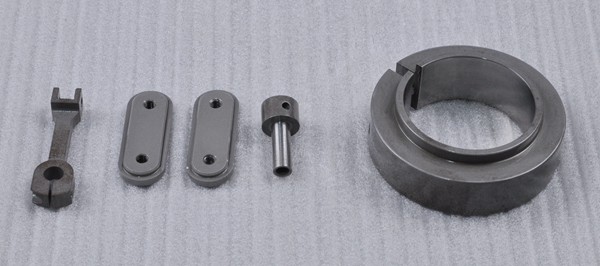
Alloy vs Carbon Steel: Processing Requirements
Naturally, carbon steel has a smaller number of elements in the mixture. So, it’s simpler to create and process. Alloy steel, on the other hand, has a variety of constituent elements and all mixtures require different processing conditions.
Alloy vs Carbon Steel: Cost
Carbon steel has a simpler composition and doesn’t need any elaborate processing. That’s why it’s considered a more cost-effective alternative to alloy steel.
Quick Chart: Key Differences Between Alloy and Carbon Steel
Here’s a breakdown of how carbon steel fares against alloy steel while considering the right parameters. For any project, the better choice will be the material with the best balance between the overall cost and functionality.
| Characteristic | Carbon Steel | Alloy Steel |
| Strength | ✔ | |
| Flexibility | ✔ | |
| Durability | ✔ | |
| Corrosion Resistance | ✔ | |
| Hardness | ✔ | |
| Cost | ✔ | |
| Processing Requirements | ✔ | |
| Ductility | ✔ |
Applications of Carbon and Alloy Steel
As stated before, both carbon and alloy steel play an integral role in different industries because of their superior strength, versatility, and corrosion resistance. Here are some of the most common ways both types of Steel contribute to different industries.
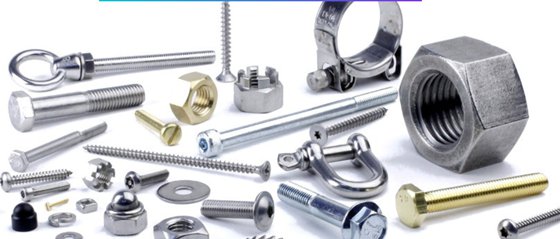
Common Applications of Carbon Steel
Carbon steel is a great choice for many industries because its versatile, durable, and most importantly economical. It’s the material of choice for medium to low-intensity applications and offers a wide variety of desirable features.
- Construction
- Automotive
- Manufacturing
- Piping
- Kitchenware
- Agriculture
Common Applications of Alloy Steel
Alloy steel sets itself apart with its excellent physical characteristics and corrosion resistance properties that make it suitable for intensive applications in harsher conditions.
Here are some areas where alloy steel is the material of choice:
- Aerospace Industry
- Oil & Gas
- Automotive
- Medical Equipment
- Power Generation
Alternative Materials to Alloy and Carbon Steel
Carbon steel and alloy steel combined are among the most versatile materials out there. The balance between strength, durability, performance, and corrosion resistance both materials offer is unmatched.
However, the following materials can be some close alternatives to steel in terms of a single aspect like corrosion resistance, enhanced durability, or overall strength.
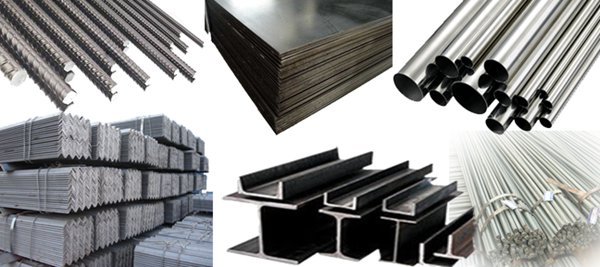
Nickel Alloys
A perfect alternative where corrosion resistance is the most important factor as Nickel is as close as it gets to a chemically inert material with reasonable strength and malleability.
Aluminum Alloys
Aluminum alloy is an expensive alternative to a lot of steel applications where strength, durability, and a high strength-to-weight ratio are required.
Titanium
A light, strong, and extremely durable material that is commonly used in the aerospace sector. However, it’s important to note that Titanium is extremely hard to process which is reflected by the overall cost of the material.
Ceramics
This is another great alternative with comparable strength, longevity, and corrosion resistance. However, most ceramics are extremely brittle, and that limits their applications to only a few sectors.
Choose A Reliable Partner for Steel Machining
Processing and manufacturing steel requires precision and expertise. The right manufacturing partner can deliver the best results in a short time and that’s exactly what WayKen offers to clients.
We have extensive expertise in the field of handling both carbon and alloy steel. Our comprehensive metal machining capabilities, including milling, turning steel, and rapid tooling steel mold, can help create even the most complex parts with the required precision and accuracy.
Conclusion
Both alloy and carbon steel play an integral role in different industries. The right choice between the two depends on the specific application and required material properties. Both material choices have their drawbacks and advantages it’s the responsibility of the manufacturer to select the right material that delivers the perfect balance between cost, physical properties, and performance.
FAQs
What is the main difference between carbon steel and alloy steel?
Technically, carbon steel itself is a type of alloy steel as well. Their main difference between these types is the addition of carbon and other elements. As its name suggests, Carbon steel consists of carbon and a trace amount of other elements mixed with Iron while Alloy Steel has multiple other elements like Chromium, Nickel, Vanadium, etc.
Why is alloy steel more expensive than carbon steel?
Alloy steel has a variety of other elements that might be rare while carbon steel only has commonly available carbon mixed with Iron. Furthermore, alloy steel is much harder to process and requires more resources, which is then reflected in its high cost.
Can carbon steel be used in place of alloy steel?
In most cases, no. Carbon steel doesn’t have the right corrosion resistance properties and durability/strength, which makes it impossible for carbon steel to replace its alloy counterparts in intensive applications.

